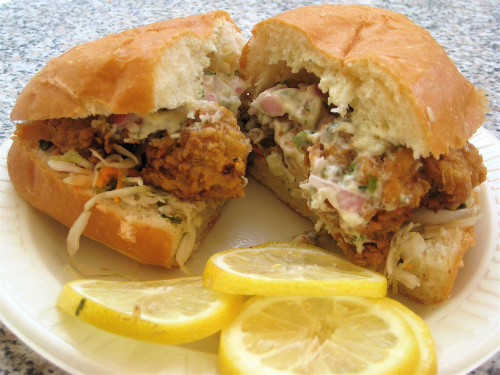Last week, the Wall Street Journal profiled street food vendors throughout the U.S. highlighting the popularity of mobile/temporary/cart foods. It appears that the segment of foodservice is increasing in popularity as consumers want more than just hot dogs and sausages. Many of the operators profiled by WSJ have online ordering, text message support and tweet (on twitter) to better connect with customers and provide speed and convenience.
With more complex foods (other than just reheating cooked meats) comes more complicated (and potentially risky) preparation and handling steps. Multiple raw ingredients need to be kept at the right temperature, operators have to avoid cross-contamination and, keep bacteria and viruses off of their hands. All within the confines of a cart or trailer.
Operators must know (and care) about the risks associated with the products they sell. Health inspectors are part of the solution, but a good street vendor manages the risks before the inspector points them out.
The WSJ also reported back in April that the strictly street meat industry is booming as well– hot dog cart sales for some manufactures have doubled..jpg)
Sales of carts, which start at about $2,000 new, have heated up in the past year. "Every model is…taking off," says Joel Goetz, owner of American Dream Hot Dog Carts Inc. in St. Petersburg, Fla. Since January, he has sold about 25 carts a week, 15 more than usual.
"Business is really off the charts," says Dan Jackson, a division manager at Nation’s Leasing Services in Newbury Park, Calif. Leases for hot-dog carts account for about three-quarters of sales, and revenue is triple what it was this time a year ago, he says.
Some of the problems that can arise with mobile vendors were exemplified by the good folks at Seattle & King Co. Health. The Seattle Times reports that the health authorities closed a bistro-style mobile restaurant (which was profiled in the WSJ piece), operated out of an Airstream trailer by Skillet Street Food, after finding several health code violations.
The department found several issues — including no water in the hand-washing area, no cold storage for food and no arrangements for restrooms — and shut it down.
The trailer also reportedly didn’t have a license to operate (while a sister trailer, which remained open, did).
In a follow-up article, chef-owner Josh Henderson tried to explain the situation:
"We have one trailer not fully approved," explained Henderson as he readied for tonight’s game. "The original trailer people see every day was having some mechanical issues, so we were forced to bring out the one that’s not approved."
Forced?
"We signed a contract with the Mariners for the season, saying we’ll be out in that lot." It was a choice between not operating and potentially having a breach of contract, he said, or not having a permit for the night and hoping they could get away with it. "We made a bad choice."
Henderson went on to say:
"We’re a young business. We’ve invested money. We’re struggling to pay bills. We don’t have deep pockets and large investors. When it comes down to paying payroll and operating a business, sometimes these risks are outweighed by other stuff. That’s the reality."
Yeah, not so sure that potentially making a bunch of people sick so you can honor the terms of your contract the best risk to take. If something goes wrong you’re probably out of business (and not fulfilling that contract with the Mariners).
Stop tweeting, get some water and wash your hands.
 According to media accounts, the holiday companies continued sending guests to the hotel despite a major outbreak of Shigella and Salmonella which lasted for months.
According to media accounts, the holiday companies continued sending guests to the hotel despite a major outbreak of Shigella and Salmonella which lasted for months. A spokesperson for Thomas Cook said,
A spokesperson for Thomas Cook said,

 However, Katie did confess she now misses my homemade-from-scratch buckwheat pancakes with berries.
However, Katie did confess she now misses my homemade-from-scratch buckwheat pancakes with berries. .jpg)

.jpg)
.jpg)


 It has been almost three months now that my diet has been more or less dairy free. Shortly after Sorenne turned two months old, she became plagued with eczema. Her pediatrician never recommended I change my diet, as he was satisfied that she continued to gain weight, but I couldn’t stand watching her turn red and try to scratch herself with little hands that she could barely control. A friend of mine, and many articles I read, suggested cutting dairy. My first reaction was – that will be the end of nursing. I am
It has been almost three months now that my diet has been more or less dairy free. Shortly after Sorenne turned two months old, she became plagued with eczema. Her pediatrician never recommended I change my diet, as he was satisfied that she continued to gain weight, but I couldn’t stand watching her turn red and try to scratch herself with little hands that she could barely control. A friend of mine, and many articles I read, suggested cutting dairy. My first reaction was – that will be the end of nursing. I am 